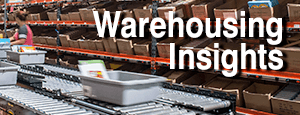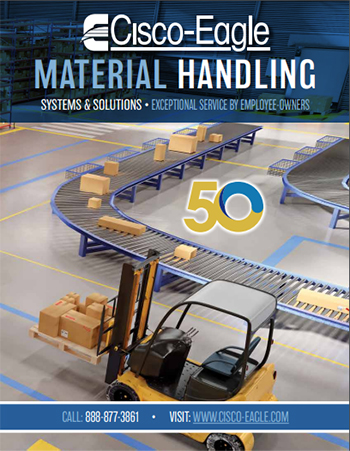Strengthen Your Facility’s Safety Chain: Addressing the Overlooked Weak Links
From docks to break zones, these small adjustments pack a big punch for a safer workplace
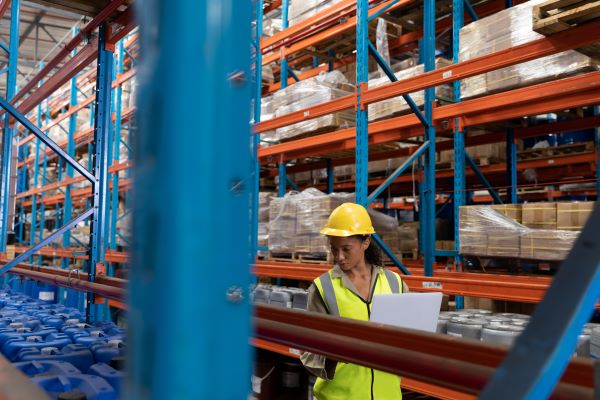
Every facility has its heroes—the shiny conveyor systems, towering pallet racks and state-of-the-art automation that seem to draw all the safety focus. But just like in any good action movie, even the heroes have a few weaknesses. Warehouses and manufacturing facilities are no different! These “weak links” are the areas that, if overlooked, can cause big safety issues. You can create a stronger, more resilient facility by paying attention to these sneaky trouble spots.
So just what are those trouble spots that if left untouched could lead to costly mistakes? Hint: Look at where your workers are moving to and from
Addressing the overlooked risks: Solutions for a safer facility
Dock edges and the case of the creeping trailer
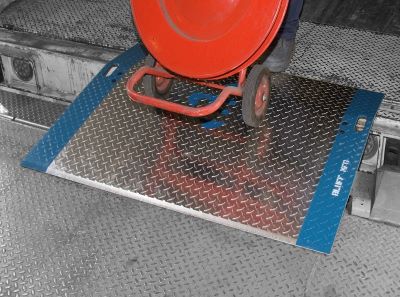
If you’ve worked near a loading dock, you’re probably familiar with trailer creep—it’s when a trailer subtly edges away from the dock as it’s being loaded or unloaded. It’s like watching a slow-motion action scene…until something slips.
The solution? A good Dock plate helps fill those gaps, and well-placed wheel chocks can keep wheels out of motion. Both are small fixes with a big payoff, creating a stable dock connection and preventing the cringe-worthy accidents that come with trailer shifts.
Read more: How to Use Dockboards & Dockplates Safely and Effectively
Temporary repair zones are “no-go” zones for foot and forklift traffic
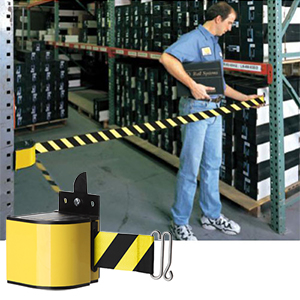
Leaks, broken equipment, quick floor fixes—temporary repair zones are almost like those makeshift “roadwork” signs on highways: you notice them just as you’re zooming by.
Without proper marking, these repair areas can become unexpected obstacles. You can block these areas off with temporary barriers to ensure that forklifts or other traffic don’t enter the zone where people are picking, packing, or repairing. Use inexpensive portable safety gates, retractable barriers or freestanding barriers.
Scenarios for temporary barriers:
- Block a rack aisle during inventory, manual picking, repair or inspections.
- Restrict access to areas where people are working at height, and others may pass beneath, such as changing light bulbs from high warehouse ceilings. This endangers the people who are elevated, and those passing below. It’s better to remove people entirely from the area.
- Keep people away during machine maintenance. This is both a safety and security concern, as expensive tools and parts are present.
- Remove traffic from a cross aisle while heavy forklift traffic occurs. Many gate systems exist that can do exactly that.
These barriers are economical, easy to set up and can help you protect people from traffic or interference while they’re on ladders, laying on their backs or absorbed in a repair operation. Plus, they come down quickly once repairs are done, letting you keep the workflow moving without extra hurdles.
Where do people gather, move and accumulate? Those are places you can improve safety
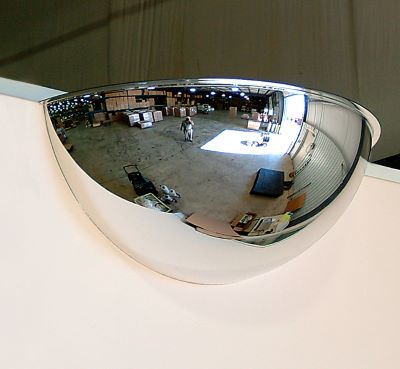
Any area that attracts people is one where traffic management and safe egress are important. Watch traffic patterns for break areas, restrooms, locker rooms, and other places where people gather. These are places where forklifts generally shouldn’t be allowed, or at worst regulated.
Break areas are safe havens in your facility—small corners where employees can breathe. But if they’re near a bustling zone, they can feel like a high-stakes intersection. You don’t want your workers to feel stressed in the areas specifically designed to help them relax. Bathrooms see constant but irregular traffic, so how do you ensure foot and forklift traffic don’t mingle? If you have a lunch room, can you block aisles during those hours? What about shift changes and locker rooms?
Anywhere you have people, you should consider ways to reduce accident factors. Add quick and easy solutions like high-visibility floor markings or corner mirrors to give higher traffic areas a safe buffer. Not only does this keep employees safe, it also means your team won’t have to dodge traffic every time they grab a coffee.
Read more: Why floor marking is essential
Guarding conveyor ‘pinch points’ is all about boundaries

We’ve all experienced a “pinch point” before—those tight spaces where people, equipment, or products can get trapped, bumped, or worse.
In warehouse terms, pinch points are often around conveyor systems or high-density storage, where everything flows… until it doesn’t. Adding pinch-point guards and safety signage around these risky zones gives employees a heads-up before they find themselves in a tricky spot. It’s a little boundary-setting that helps everyone move freely.
Read more: Conveyor Safety Guards, Danger Zones and Injury Prevention
Impact protection for equipment storage: Because nobody likes a scratched wall
Regarding equipment storage areas, it’s not just the equipment that takes a beating; walls, racks, and even floors can start to look a little worse for wear. Scratches, dents, and chips aren’t just eyesores—they’re signs of wear that can become structural problems if left unprotected.
Bumpers and padded guards soak up the damage from accidental collisions. This way, your equipment and infrastructure last longer without the wear-and-tear drama.
Read more: Where to add warehouse guardrail
Finding the weakest links
It’s all about checking those “weak links”—the little things that have a big impact on safety. The things you don’t consider every day.
Whether it’s installing trailer restraints at the dock or adding a safety gate around temporary repairs, can prevent big issues down the line. Safety isn’t just about the major issues; it’s about strengthening every link in the chain, from the highest pallet to the most forgotten column. After all, a strong facility is one where every corner gets the care it deserves.
Download our catalog
At Cisco-Eagle, we pride ourselves on being a single source for your material handling needs with a long history of performance you can rely on. Because we also believe in empowering our customers with detailed information and options, we’re proud to offer the latest version of our company catalog.
Download the catalog today
Evan Fleishacker



